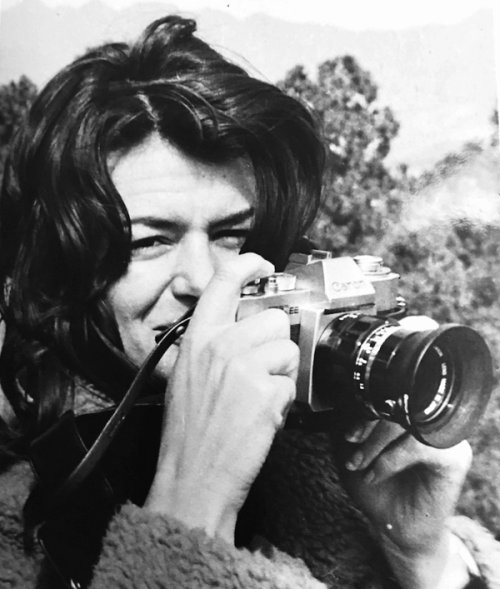Marysia Lewandowska
Voicing the Archive
2022
Taking up the one-year-long research residency at The Cosmic House, artist Marysia Lewandowska has engaged with archives in London and Portrack, with focus on Maggie Keswick’s legacy in the design of The Cosmic House and its intellectual life. Parallel to the early stages of cataloguing the Jencks Archive, Lewandowska’s research seeks to give voice to female presence within the house and archive, and inform institutional archival practices at this crucial, formative time. In March 2022, Lewandowska took over our online platforms to showcase some archival research that later contributed to the final work at The Cosmic House. Her residency culminated in a multi-channel, site-specific sound installation, 'how to pass through a door', currently on view through September 2023. Read more about the residency here.
In this post, I would like to share some archival research related to Maggie Keswick Jencks (1941—1995) a Scottish writer, artist and garden designer, who collaborated with Charles Jencks on designing their family home known as The Cosmic House and shaping the intellectual life that unfolded there until her untimely death in 1995. Together they co-founded Maggies’ Cancer Caring Centres.
Aged 5, she is pictured here in 1946 with her father John Keswick on the grounds of the family estate at Portrack, Dumfriesshire, Scotland, learning to plant.
This picture was taken during the 1974 trip to South East Asia, when Maggie was in the process of researching history and design of gardens for her book The Chinese Garden. Several hundreds of black-and-white photographs and colour slides formed the basis of her reference image library, with some traces of the labelling system still present in Maggie’s Study at The Cosmic House.
The Chinese Garden: History, Art & Architecture was published in 1978 by Academy Editions, as the first comprehensive, scholarly publication on the topic in the English language. The same year Maggie Keswick and Charles Jencks married and purchased what would become their London home, starting a major re-design and renovation of what is now known as The Cosmic House in Holland Park.
The Cosmic House contains many exquisite examples of Chinese scholars’ rocks, also known as Gongshi. Revered by the literati elites since the Tang Dynasty, they were traditionally placed on their desks for the purpose of contemplation. Inspiring poetry and painting, these spiritually charged objects introduce the cosmic dimension to creative life. In this ink pen and watercolour depiction, Maggie captures one example from her parents’ collection at Portrack.
Maggie’s design for the Time Garden at The Cosmic House beautifully articulates Daoist ideas of life cycles, which she encountered during her many visits to the gardens in China. By creating distinct areas of interest ranging from strong architectural yew hedges to a soft cloud of cascading wisteria, as well as water elements, the scheme complements the symbolic programme introduced by Charles Jencks. A page from the 1980 notebook shows initial sketches of the design.
Maggie produced detailed notes and planting schemes, which appear in her numerous notebooks housed in the Jencks Archive. Deeply aware of how seasons and soil contribute to the display, her plant lists read like poetry, a coded language spelling out shape, colour, and scent. Latin names are interspersed with common ones, she is thinking on her feet, using her vast knowledge as she feeds our imagination and entices a sense of magic. In her notebook from 1988 Maggie writes:
‘What is the purpose of the Garden? To refresh the heart. How? Through sense and imagination; engage emotions and mind. The particular expression of the essential. What matters is synthesis of what is important to you, here and now.’
